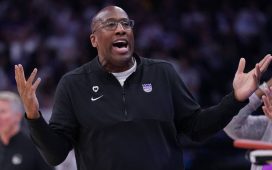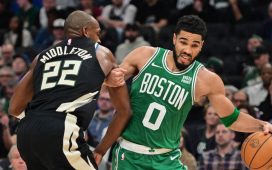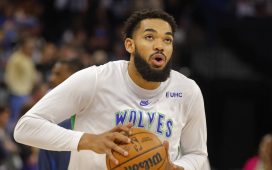The candidates for the American men’s Olympic team for three-on-three basketball include an investment banker, a social worker and a podcaster. There are former college players from Princeton and Florida Southern, many of them following something like the supposedly outdated amateur model of 50 years ago to claim Olympic glory in an event that will make its debut at the Games this year.
Then there are the candidates for the American women’s team — plenty of W.N.B.A. players, including Kelsey Plum, the 2017 No. 1 overall draft pick.
Whether the International Olympic Committee meant to or not, the advent of the event being referred to as “3×3” at the Games has created a fascinating talent gap between the pools of players U.S.A. Basketball will select from Monday to participate in the event. It exists partly because of the nature of the qualifying system but also because of the calendar. N.B.A. players have been a little busy during the fall and winter qualifying period. It also says something about the way the game differs for the sexes in the United States and around the world.
U.S.A. Basketball is not in a position to simply name LeBron James, Damian Lillard and Jimmy Butler to the men’s team and be done with it. The rules of Olympic “3×3” mandate that players on the team have earned points in events that took place over the past few months.
The opportunity was there to recruit some good women’s players, whose W.N.B.A. season takes place in the summer. Not so for N.B.A. players, and even the hundreds of American men earning a living playing basketball in Europe and China.
That leaves candidates like Dominique Jones, 31, who played at Division II Fort Hays State; Canyon Barry, 26, a Florida star now in the G League; and three Princeton alums. “It’s definitely an eclectic mix,” Barry said.
In contrast, many of the female candidates, although mostly not W.N.B.A. superstars, are playing at the highest level of their sport. Besides Plum, Napheesa Collier was an All-Star last season as a rookie, and Layshia Clarendon is an eight-year W.N.B.A. vet and 2017 All-Star selection. Some of the players in the women’s three-on-three pool — like the two-time W.N.B.A. All-Star Stefanie Dolson — are also candidates for the more heralded five-on-five team.
Getting men’s players would be even harder if not for the G League agreeing to continue to pay its players when they are on national teams.
One thing both genders of players have in common is years of being exclusively five-on-five players. They came to three-on-three from different routes. Plum was recruited by U.S.A. Basketball: “Any time Carol Callan asks you if you want to be a part of something, it’s a no-brainer,” Plum said, referring to the women’s national team director.
Barry, a son of the Hall of Famer Rick Barry, was asked to join a group of G League players at the national three-on-three championship. Jones took a shot at a three-on-three event in New York when a summer five-on-five event he was planning to play in was rained out. Now they might all be Olympians.
Barry and Jones are among those who have thrived in the format. Jones won a gold for the U.S. at the 2019 Pan American Games, and Barry won a gold at the World Cup.
Before any medals are won in Tokyo, both American teams must qualify at a tournament in Bangalore, India, in March. U.S.A. Basketball has the difficult challenge of selecting four men and four women to participate, though the selections can change ahead of Tokyo. The puzzle for U.S.A. Basketball is how to put the best team together for what is in many ways a new sport.
“When we first started it wasn’t easy,” said Jay Demings, who oversees three-on-three for U.S.A. Basketball. “Back in 2012 we tried to find three-on-three organizers who were putting on street ball type events. We were accepting all comers.”
Though they are looking for pure basketball talent, of course, certain skills and abilities are especially useful in three-on-three.
“Being in great shape is the biggest one,” Plum said. “A made basket is live for the other team. There’s no walking up the court.”
The game is played to 21 points, with ordinary baskets worth 1 and long-range shots 2, essentially doubling the value of what in ordinary basketball is a 3-point shot.
Having everyone be able to shoot 3-point shots is a major plus, even if they are only worth two points. “It’s hard to get to 21 with 1-point shots,” Barry said.
The game can be physical, too. Players cannot foul out, though teams that accumulate more than six team fouls start giving up free throws and eventually technical fouls.
“You need to be a thinker,” Demings said. “There’s no coaching during the game”
“I.Q. is very important,” Jones said.
U.S.A. Basketball has a lot of options. Take a pre-existing team, like the New York-based one Jones plays on, or mix it up. Go big or go small. “We’ve had all types of teams,” Demings said. “We’ve had a team full of mostly wing players. We’ve seen teams of mostly guards who shoot.”
“Mostly we want a player who can do a little bit of everything. Specialists don’t really work. ”
It remains to be seen whether three-on-three basketball can stand out in the crowded Olympics field — surfing, skateboarding and other events are also joining the lineup this summer.
But many of the candidates are sold on a game that is played outside, has great passing, cutting and screens, and only lasts 20 minutes.
“It’s straight intensity,” Plum said.






